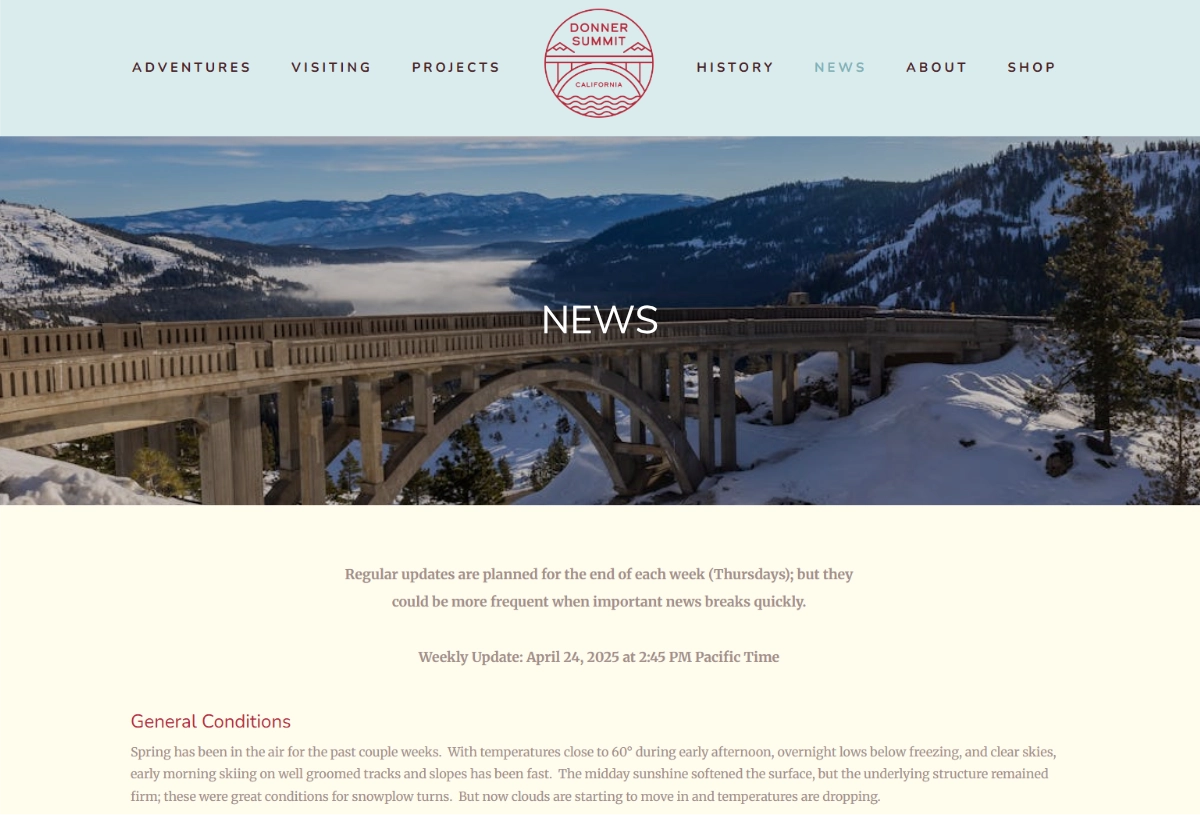From Squarespace to WordPress for Easier Editing
We’ve been performing ongoing maintenance and enhancements for the Donner Summit Association (DSA) for several years, mainly content additions, formatting, and minor cleanup. The site was originally designed and built by another vendor, and while the design still functioned well, the underlying system had plenty of room for improvement.
Several motivating factors led to the decision to move from Squarespace to WordPress. After some recent, larger content updates, we had to sacrifice some design enhancements due to the limitations of the Squarespace platform. For future improvements to the site, we wanted to have the ability to implement more robust solutions and more impactful design. However, the most important reason, especially for those adding and maintaining content, was the opportunity to simplify the entire editing process.

One of the most important areas of the site was the news section and in the Squarespace version of the site, news posts were created manually. Typically, an existing news post would be duplicated, and the editor would make careful updates to avoid disrupting the formatting. This method was inefficient and prone to errors.
When building out a website, my goal is always to make editing and content management as easy as possible. That means editors shouldn’t have to worry about formatting or design. For DSA, we built a streamlined solution: adding a news item now simply involves filling out a few fields in a custom form. The system then automatically generates the news page, updates the main news section, and archives the previous item in the news history.
We made similar updates throughout the site to improve content management in other areas. Many section pages are now automatically generated based on custom-built forms, making it easy to add new content without worrying about layout or formatting.
By moving the DSA website from Squarespace to WordPress, we created a much more user-friendly experience for content editors. The news section, once a manual and error-prone task, is now fully automated with simple forms. These improvements extend throughout the site, allowing for easier updates and better content management overall.
